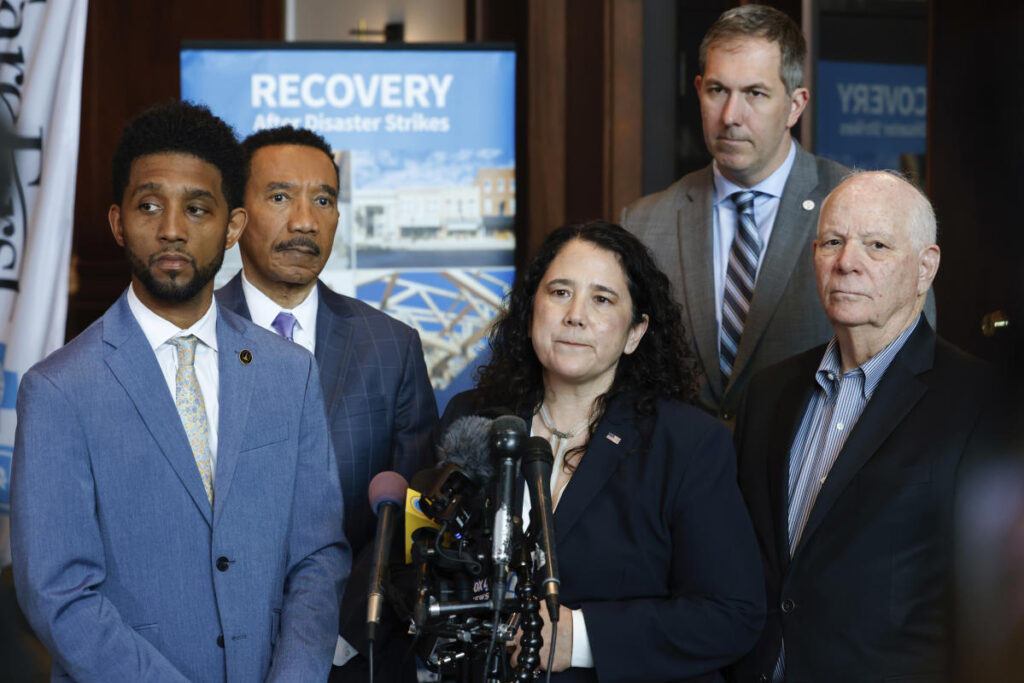BALTIMORE (AP) – Officials say 500 applications have been received for a federal program that provides loans to small businesses affected by the collapse of the Francis Scott Key Bridge in Baltimore.
Isabella Casillas Guzman, head of the U.S. Small Business Administration, said the money could begin distributing in about two weeks, with the key port in Baltimore still closed to most maritime traffic, and businesses The aim is to support the continued existence of Guzman traveled to Baltimore on Thursday to meet with business owners, along with local and state leaders.
He said companies involved in transportation and supply chain logistics were likely to be hit hardest in the short term, but the long-term ramifications would be far-reaching.
“This is a whole range of effects,” she said of the Baltimore office that opened in recent days to help business owners after the deadly collapse, which caused logistical problems for shipping along the East Coast. He spoke after a roundtable discussion at the venue. The Port of Baltimore handles more automobiles and farm equipment than any other similar facility in the country.
This assistance program offers low-interest loans of up to $2 million.
The Maryland Senate unanimously approved a bill Wednesday night that would authorize the governor to use the state's emergency fund to assist unemployed port workers. That sends the bill to the Maryland House of Representatives, where it could be approved this week and sent to Democratic Gov. Wes Moore.
The bill would also allow the governor to tap into state reserves to help some small businesses avoid layoffs and encourage relocating businesses elsewhere to return to Baltimore once the port reopens. Become.
Norwegian shipping company Wallenius Wilhelmsen, based in Baltimore, said it estimates losses of $5 million to $10 million as a result of the port closure. One of the ships is one of several currently docked in Baltimore's harbor.
President Joe Biden is scheduled to visit the site of the collapse on Friday.
The Key Bridge collapsed on March 26, shortly after departing from Baltimore, when it was struck by the Sri Lankan-bound cargo ship Dali. The ship issued a mayday warning, giving police enough time to stop traffic, but not enough to save road construction workers filling the hole in the bridge.
Authorities believe six of the workers died in the collapse, two of whom were found dead last week. The remaining two survived. The ship remains stationary, with 21 crew members still on board.
Crews are working to remove the steel wreckage and recover the remaining bodies, a task made more difficult by this week's severe weather. They opened two temporary waterways primarily intended for vessels involved in the cleanup. His third channel for large ships is under development.
Aboard a Coast Guard boat Wednesday afternoon, I saw giant steel bridge girders twisted into ribbons, shattered metal shipping containers hanging precariously from the ship, and sticking out of the water like toothpicks. A close-up reveals the devastation of street lights and other areas.
Divers are still trying to find out what lies beneath the surface. Sonar is being used to map the debris on the Patapsco River bed at a depth of 15 meters (50 feet). A large floating crane nicknamed “Chessie” is assisting in the salvage operation.


